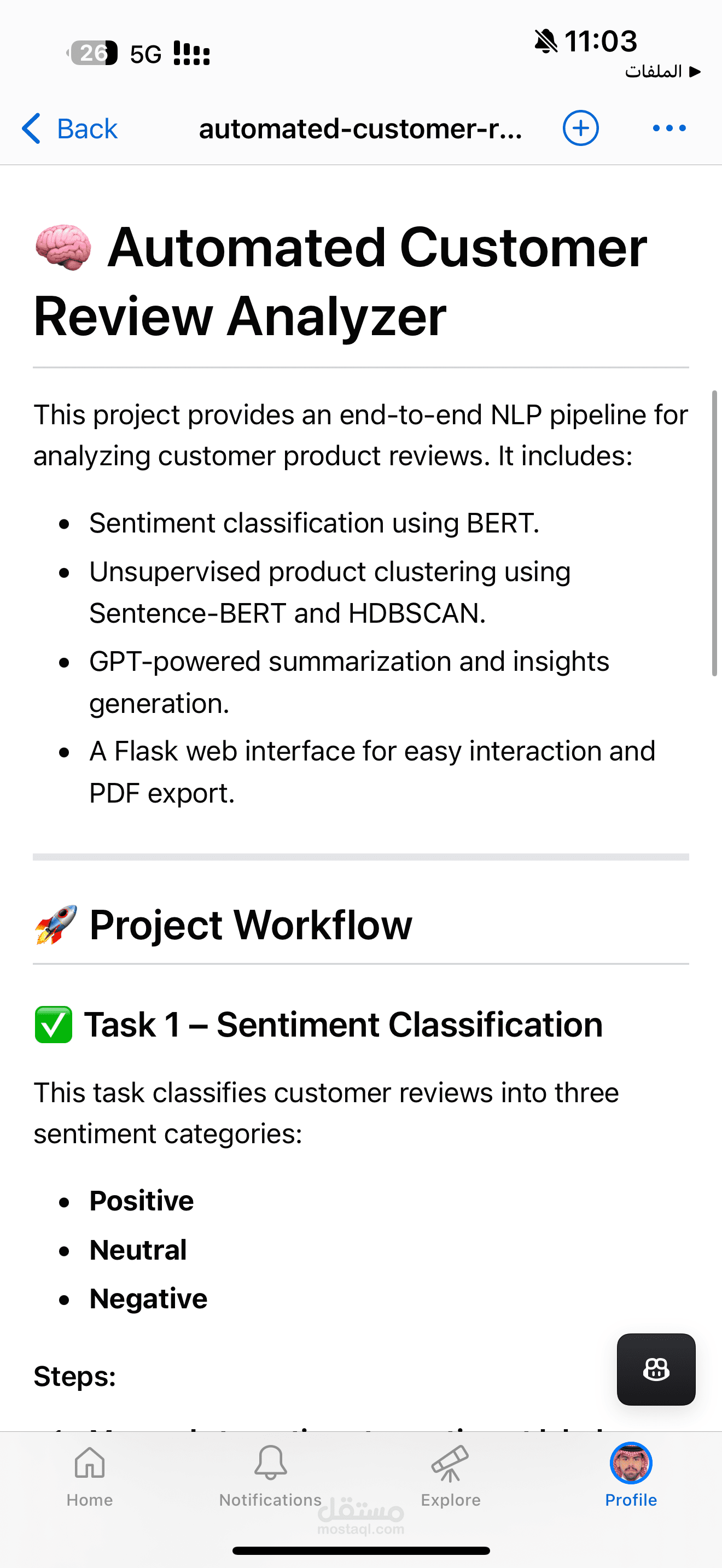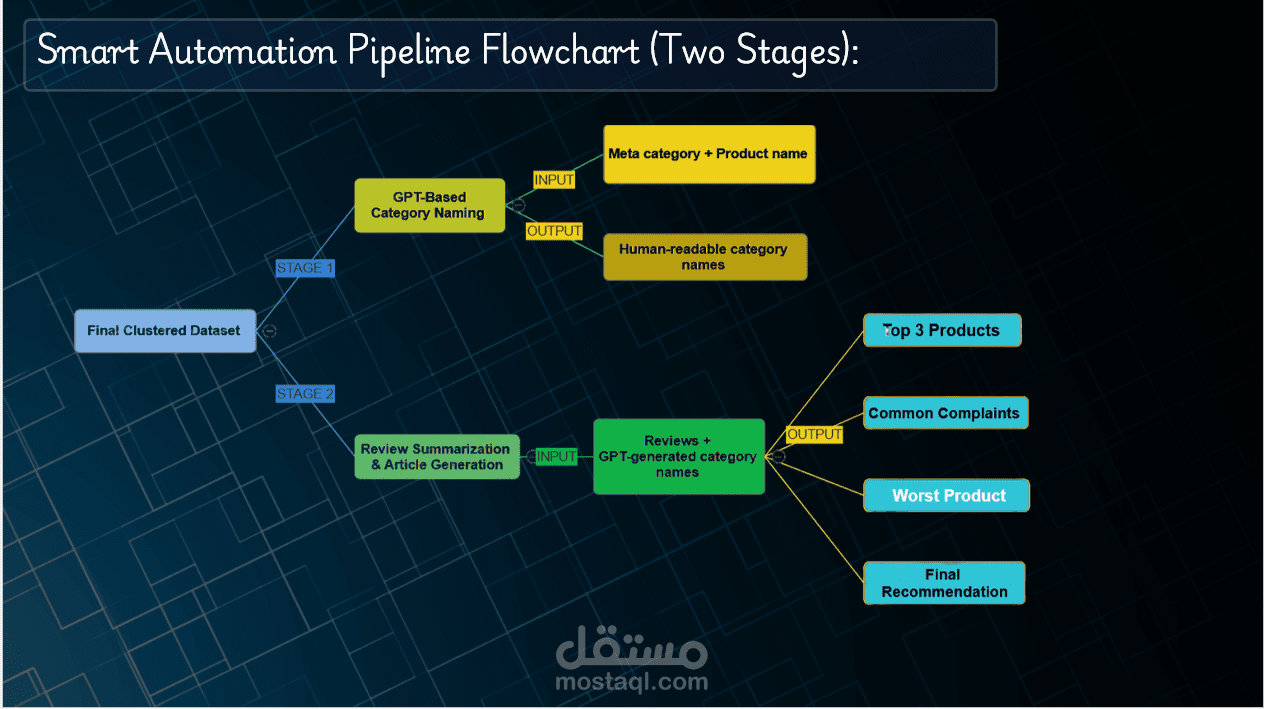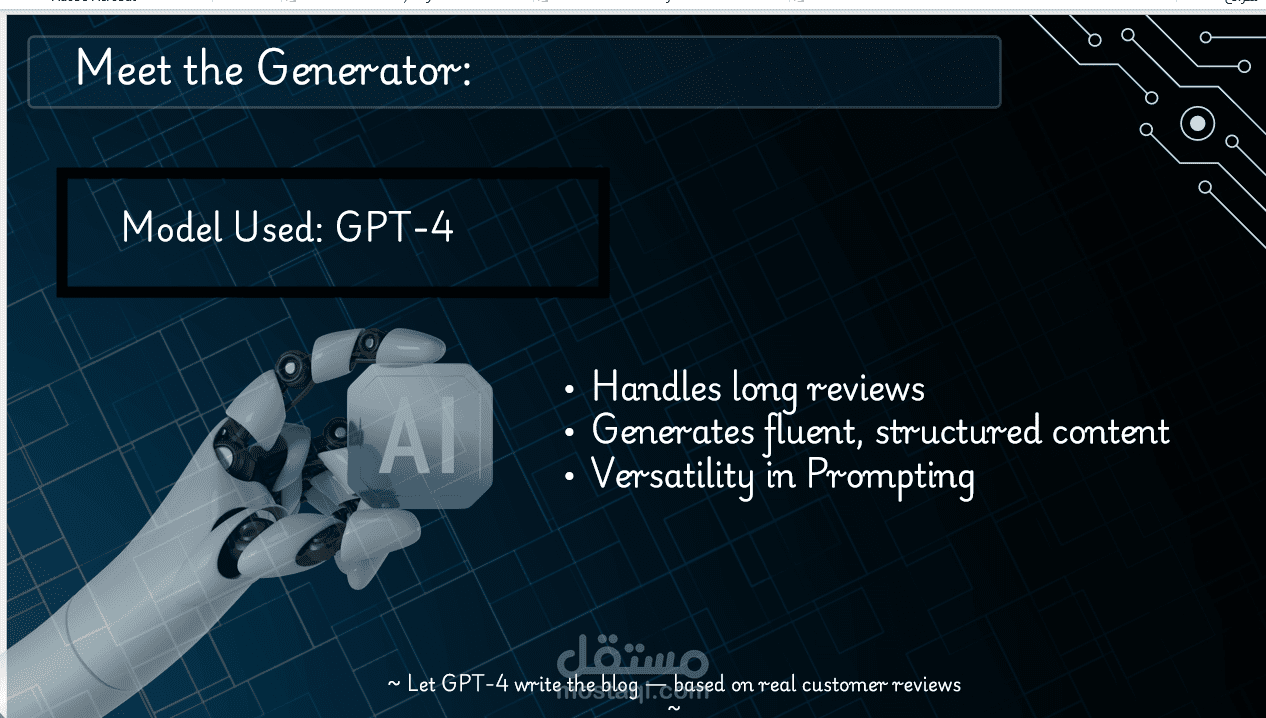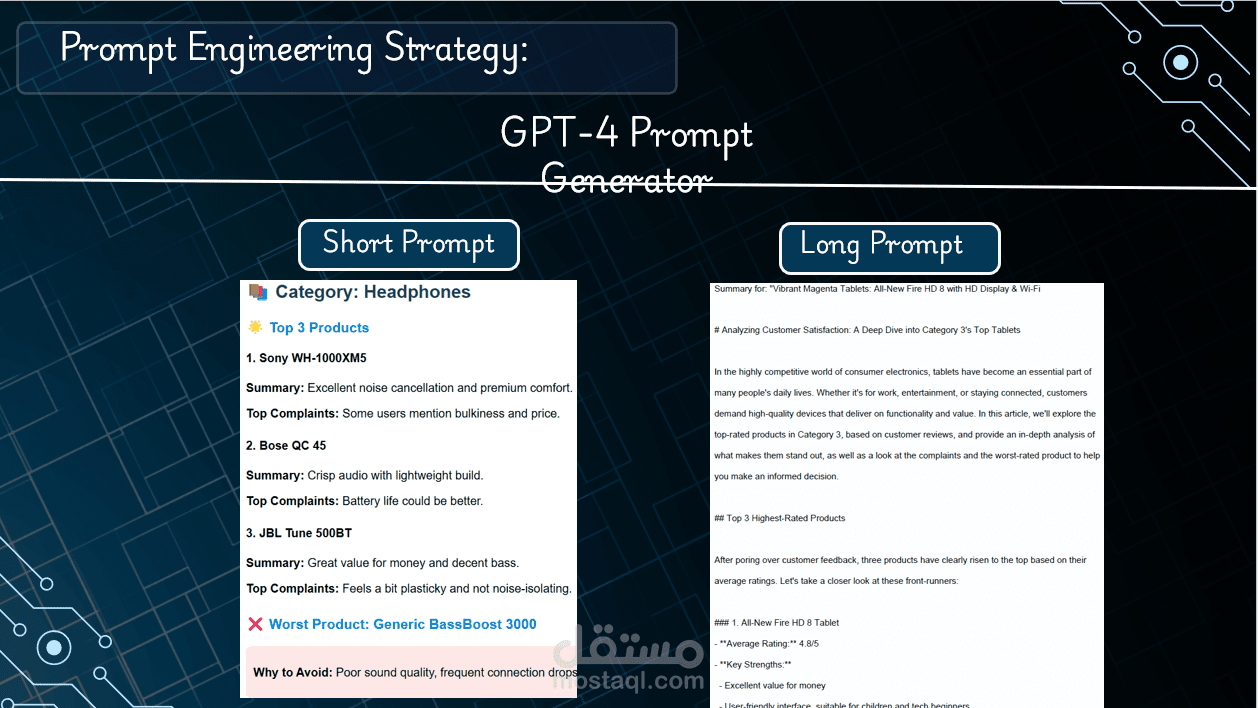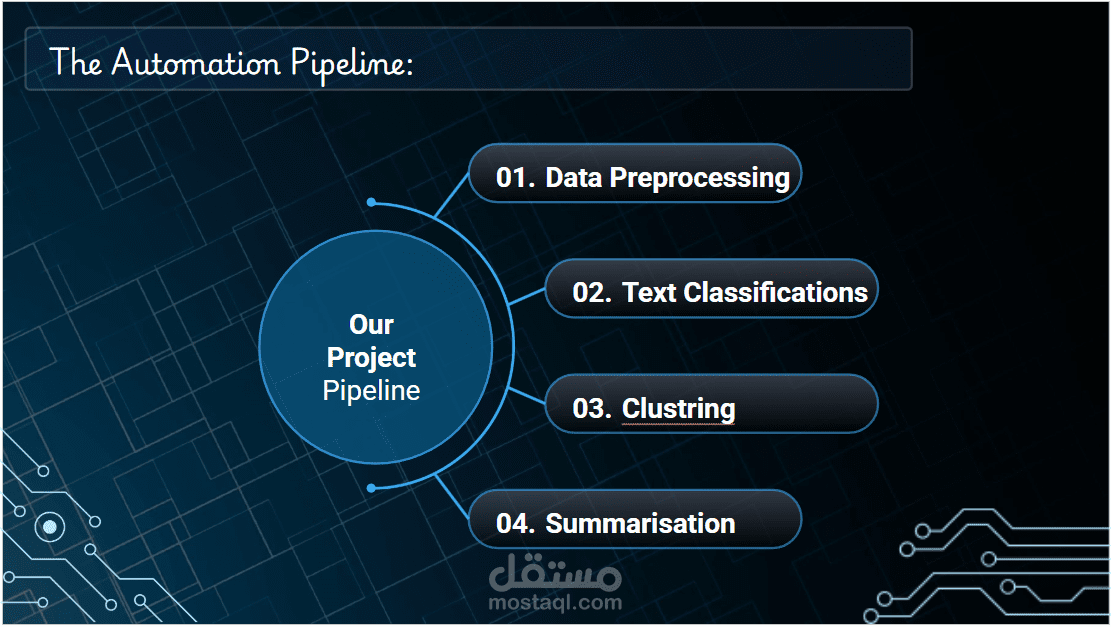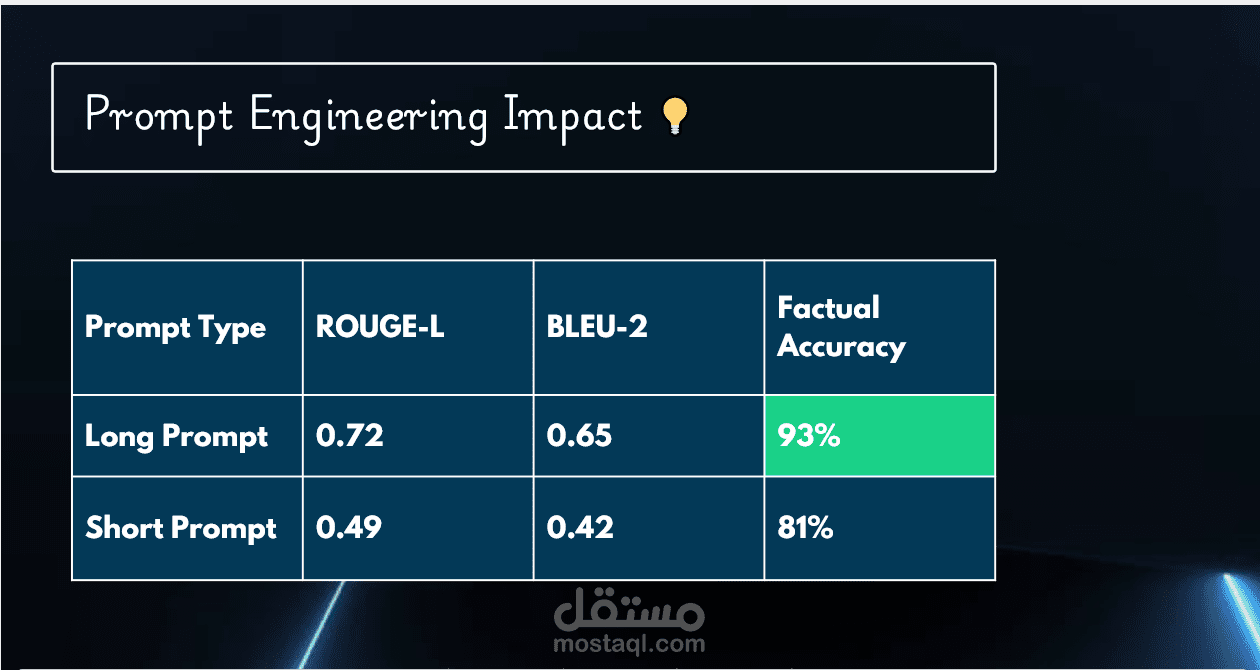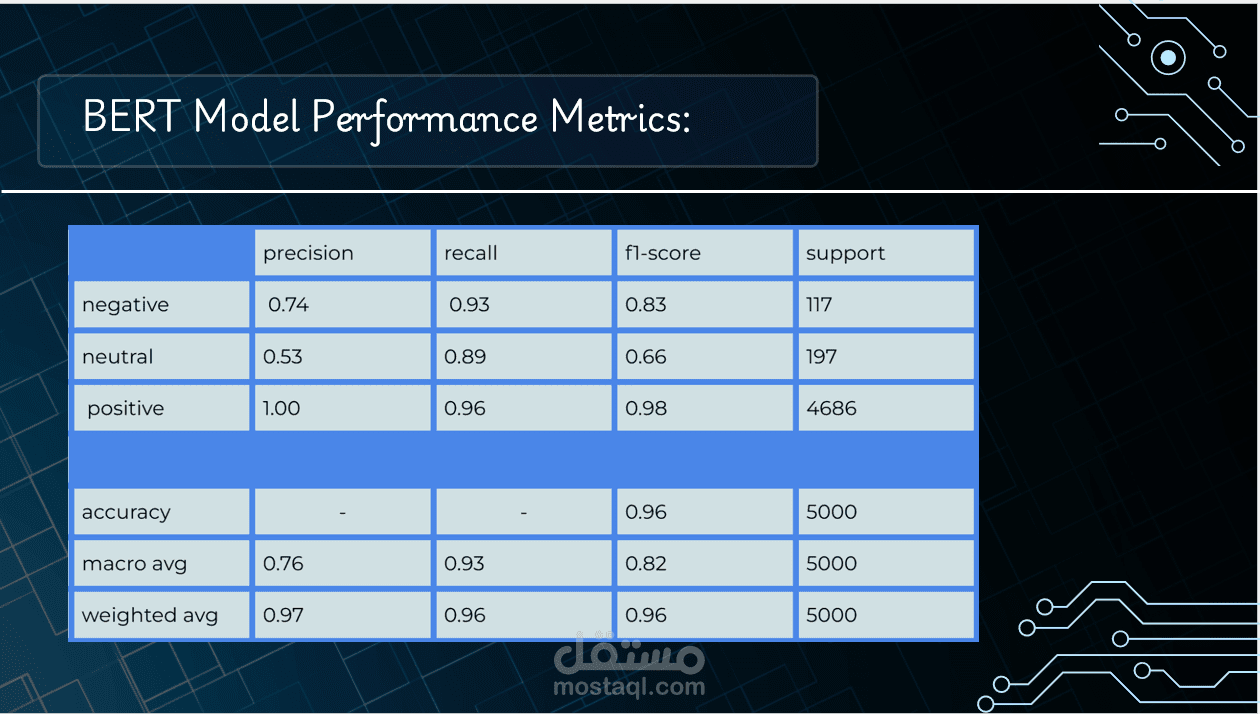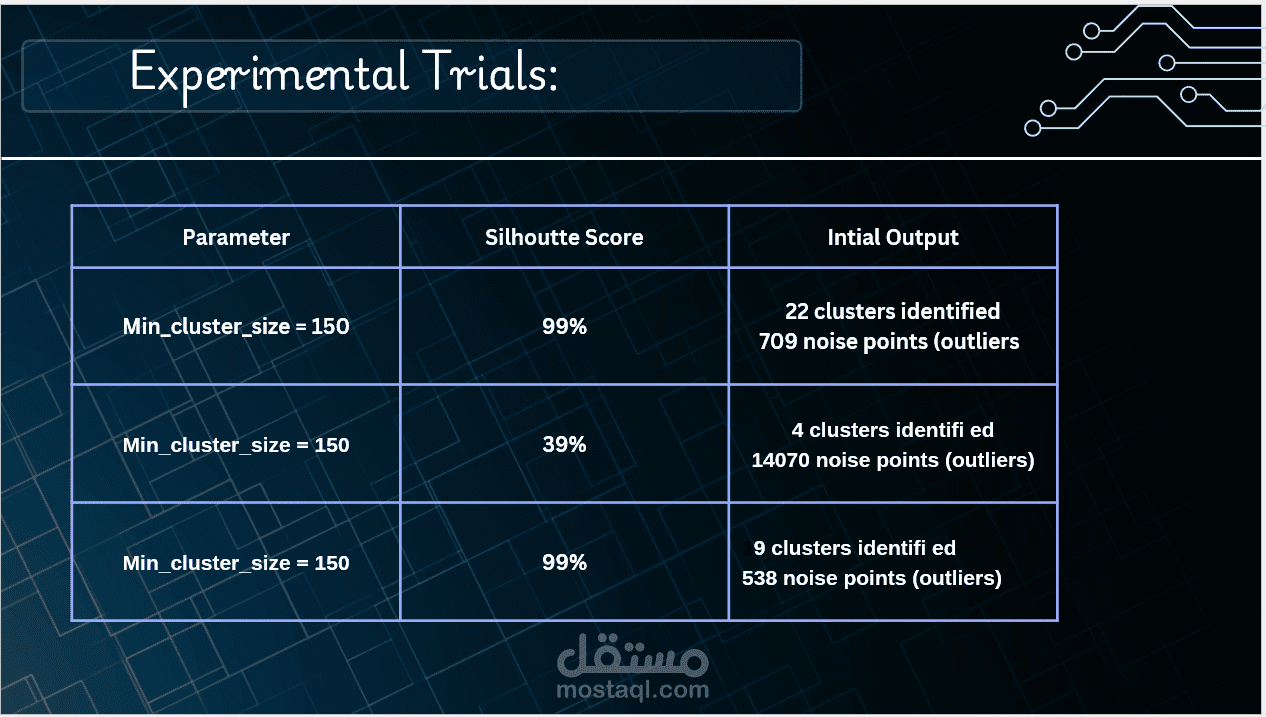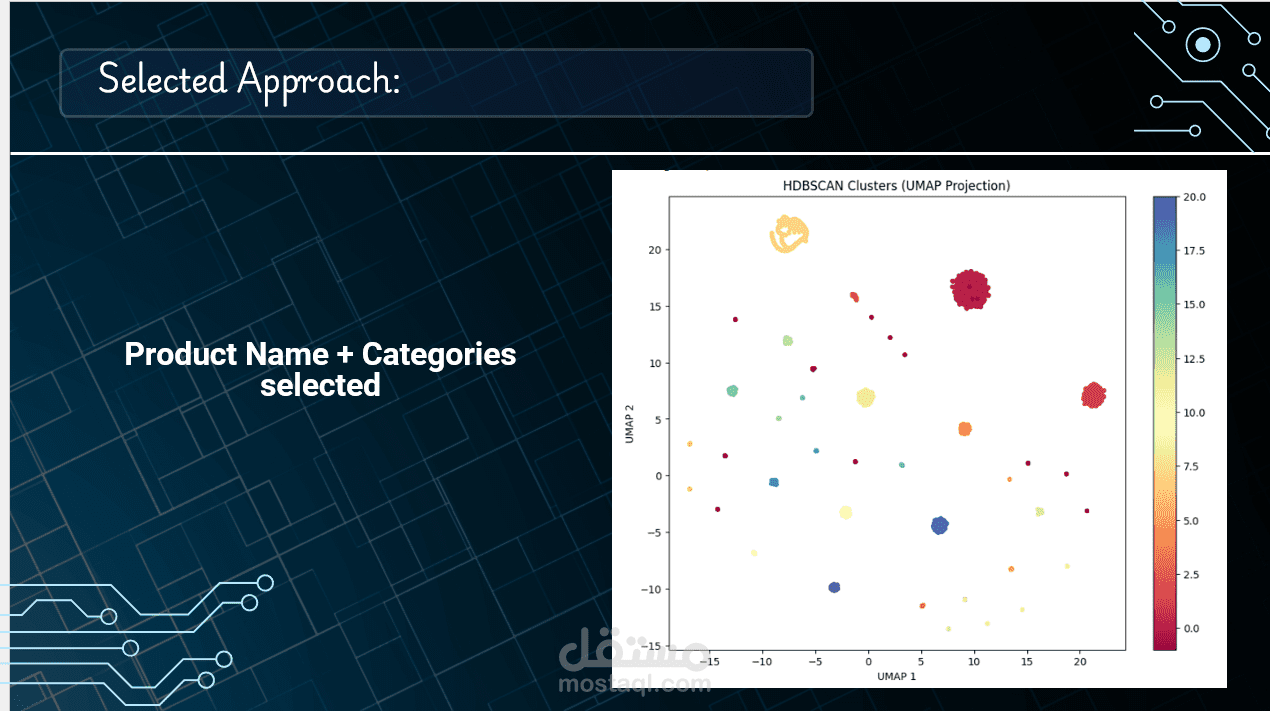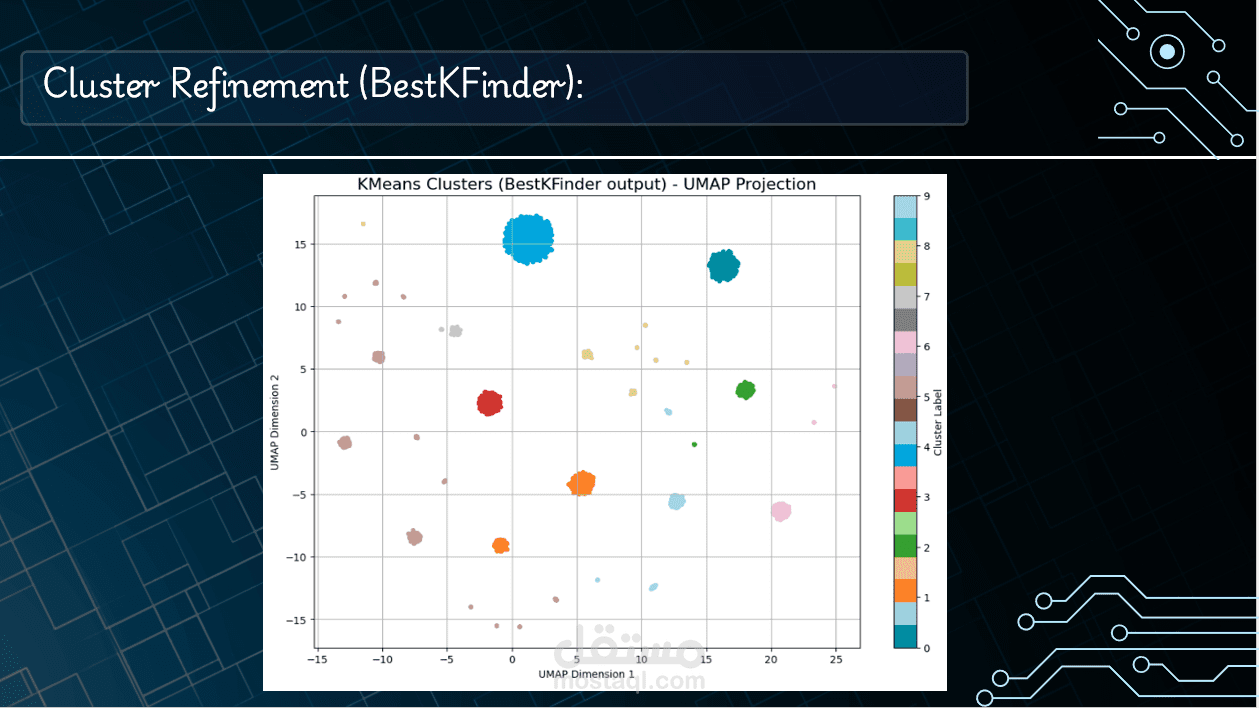Product Review System Powered by NLP Models
تفاصيل العمل
This project is an AI-powered product review analysis system that leverages Natural Language Processing (NLP) and generative AI to collect, classify, and summarize customer feedback. The goal is to provide both businesses and customers with meaningful insights extracted from large volumes of unstructured product reviews.
Built as part of the AI Engineering Bootcamp (Saudi Digital Academy), the system integrates multiple components—from review aggregation to intelligent summarization—creating an end-to-end automated pipeline for understanding customer sentiment at scale.
Objectives:
Aggregate customer reviews from multiple sources into a unified dataset.
Use NLP techniques to classify, cluster, and summarize reviews.
Generate recommendation-style summaries using generative AI models.
Improve discoverability and decision-making for both consumers and businesses.
Key Features:
Review Aggregation-
Collects reviews from multiple product review sources (e.g., e-commerce platforms, CSV exports).
Normalizes text data for consistent processing.
Review Classification-
Identifies review sentiment (positive, neutral, negative) using pre-trained or fine-tuned transformers.
Optionally detects topics or product aspects (e.g., price, quality, delivery) via keyword-based or embedding-based methods.
Clustering-
Clusters similar reviews using techniques like KMeans on text embeddings to group products or review types.
Helps reveal hidden patterns in feedback.
Summarization with Generative AI-
Uses OpenAI GPT or HuggingFace models to generate coherent summaries that highlight key themes.
Outputs structured summaries as if written by a product expert: pros, cons, and verdict.
Output Formats-
Exports structured data to JSON/CSV.
Summaries can be embedded into product pages or dashboards.
list of tools and technologies:
Programming Language: Python
NLP Libraries: HuggingFace Transformers, NLTK, (optional: spaCy)
Vectorization Methods: TF-IDF, Word2Vec, Sentence-BERT (sentence-transformers)
Classification Models: Logistic Regression, Support Vector Machines (SVM), DistilBERT, BERT
Clustering Algorithms: KMeans, DBSCAN (via Scikit-learn)
Generative AI: OpenAI GPT-3.5/GPT-4 API, T5, BART, GPT-2 (via HuggingFace)
Data Handling: pandas, NumPy
Visualization: Matplotlib, Seaborn, WordCloud
Model Deployment (optional): Streamlit, Flask
Version Control: Git, GitHub
